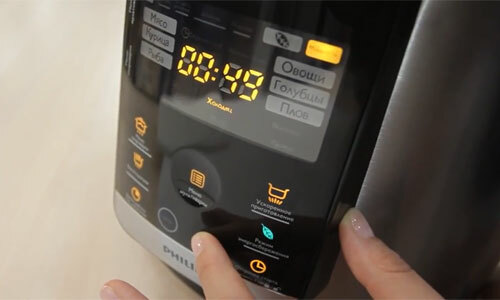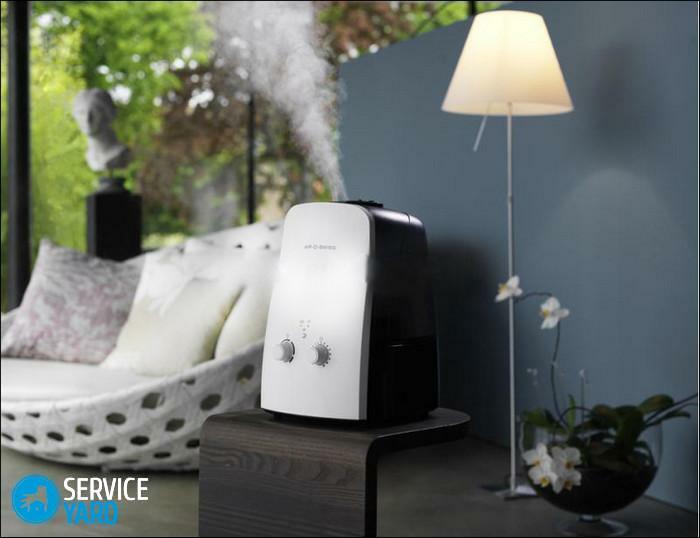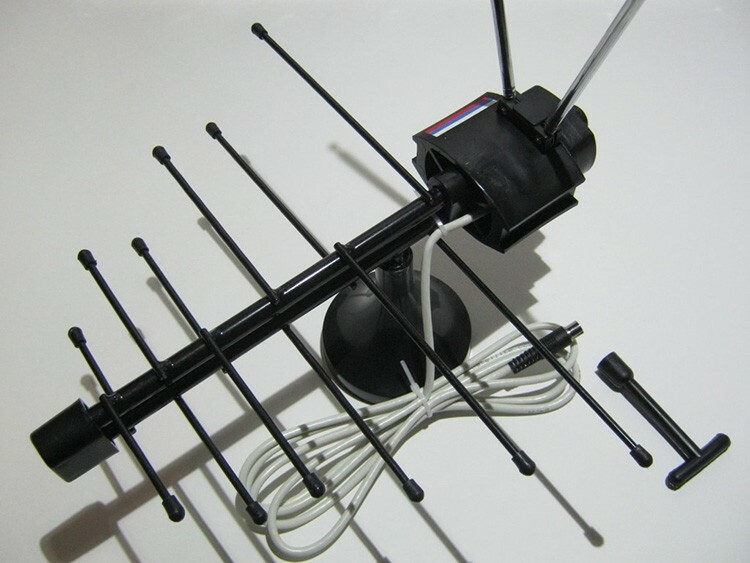
CONTENT
- 1 Types, device and tuning features of different types of indoor antennas
- 2 Popular models of indoor antennas for digital television DVB T2
- 3 Which indoor antenna is better to buy for your home: editor's choice Tehno.guru
- 4 How to set up an indoor TV antenna yourself
- 5 Poor quality of the received signal and general features of using an indoor antenna in the country
- 6 Do-it-yourself indoor antenna for digital TV
Types, device and tuning features of different types of indoor antennas
Indoor devices that receive an image signal for a TV can differ in type of design, while the principle of operation for all will be somewhat similar. The most popular today are rod and frame devices. Let's take a closer look at each type.
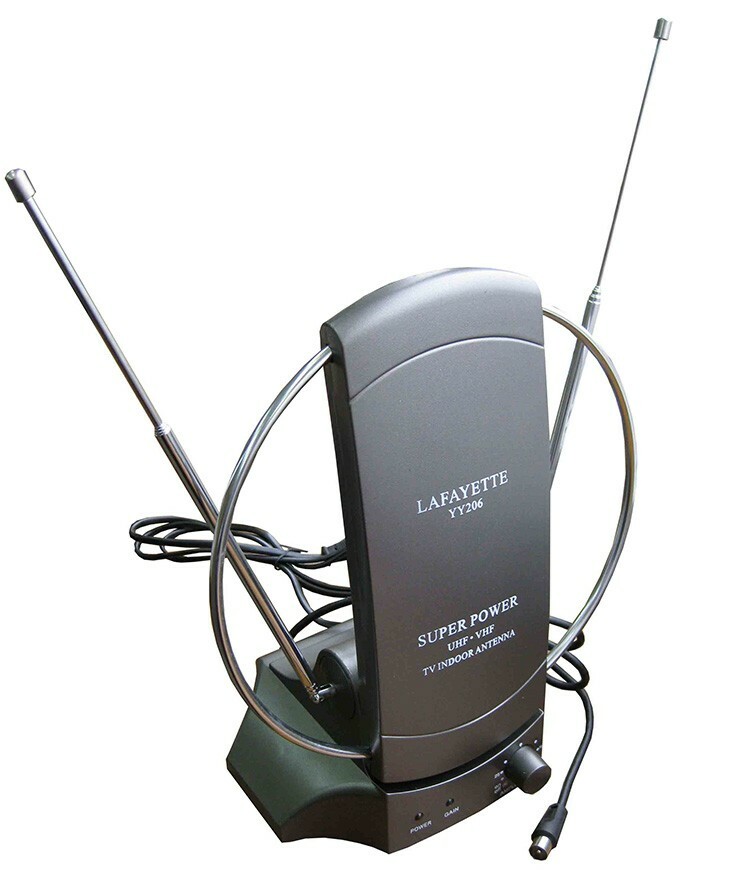
An indoor loop antenna is considered to be more versatile and easy to adjust. This design is capable of receiving a decimeter signal immediately from the moment it is launched and connected to a TV. The device is made in the form of a metal case, which forms a rectangular frame, which is attached to the base of the stand. However, even such indoor equipment is not able to perfectly receive the signal, especially if the TV tower is far away.
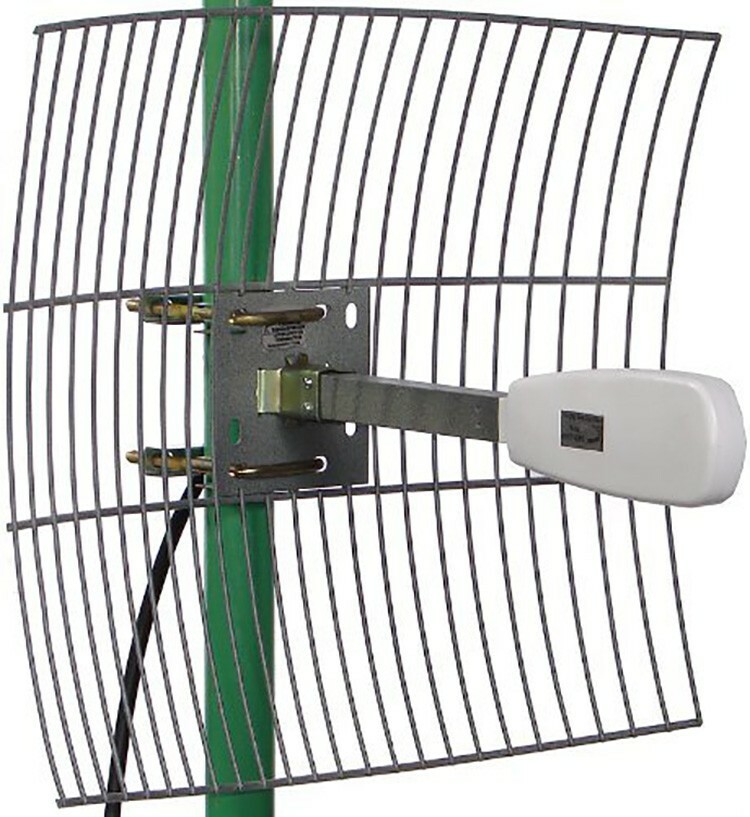
The familiar rod designs that come with most of the older type TVs in the kit require a more complex set-up. They are connected to the rear input of the TV and are tuned to receive radio waves by pulling the rods and turning the antenna body itself. If an amplifier is installed on such a device, the search for channels and adjustment of their clarity will occur several times faster.
GOOD TO KNOW!
If you are using a rod indoor antenna, be prepared for only one channel to transmit the ideal picture. The rest will show with interference. This suggests that the antenna does not provide universal tuning for all channels.
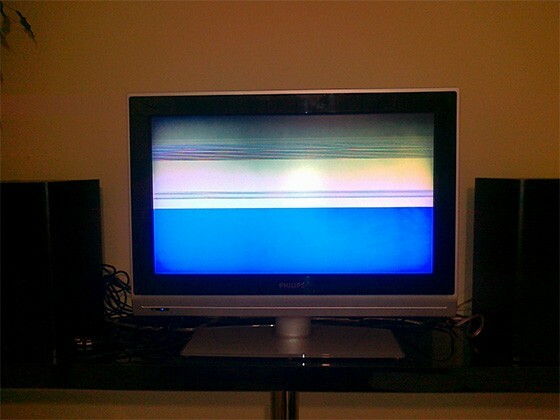
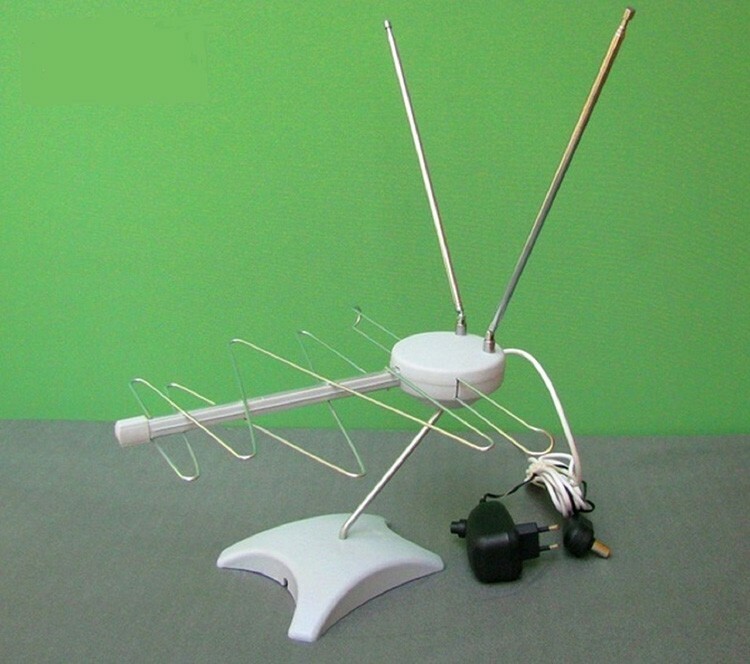
Meter and decimeter indoor antenna: design features
The meter design of the indoor antenna is designed to pick up a short signal. The device is a plastic case with two beams. A special board is built inside the device that controls the operation of the radio detector.
The device is distinguished by ease of operation: to adjust it, it will be enough to adjust the length of the pins and set their optimal slope. Thanks to the telescopic way of adjusting the pins, anyone can use the antenna without much skill.
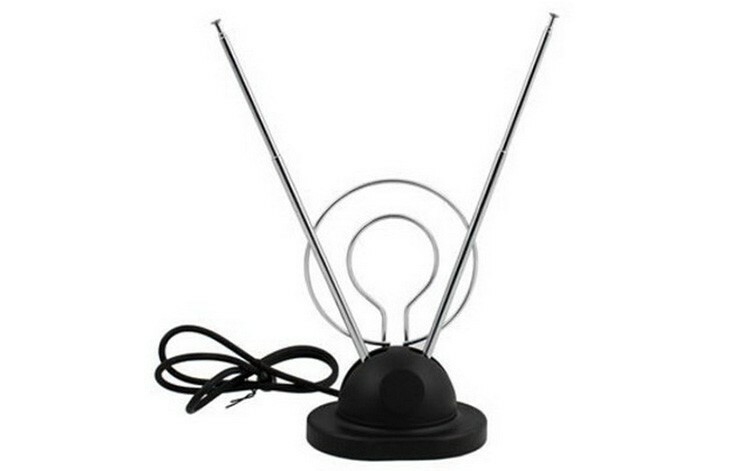
The decimeter antenna is a device that is significantly different from the previous design. With the help of this equipment you will be able to receive on your TB-receiver digital broadcast with the appropriate wavelength - from 10 to 100 cm. In appearance, the device resembles a rod with many transverse beams. Due to their quantity, the received signal turns into vibration and is significantly amplified, due to which we can see a high-quality image on our screen.
GOOD TO KNOW!
If you purchase an indoor UHF antenna, then you should know that it may not contain external crossbars, since they are hidden in the case to give the structure an original appearance.

All-wave hybrid receiver - universal for all radio waves
With the help of an all-wave indoor antenna, you can receive on TV not only analog television, but also digital, since the design is designed to capture almost any radio waves. Many people think that it is impossible to catch a "digit" with the help of such a receiver. Nevertheless, the experts of our editorial office were able to prove the opposite.
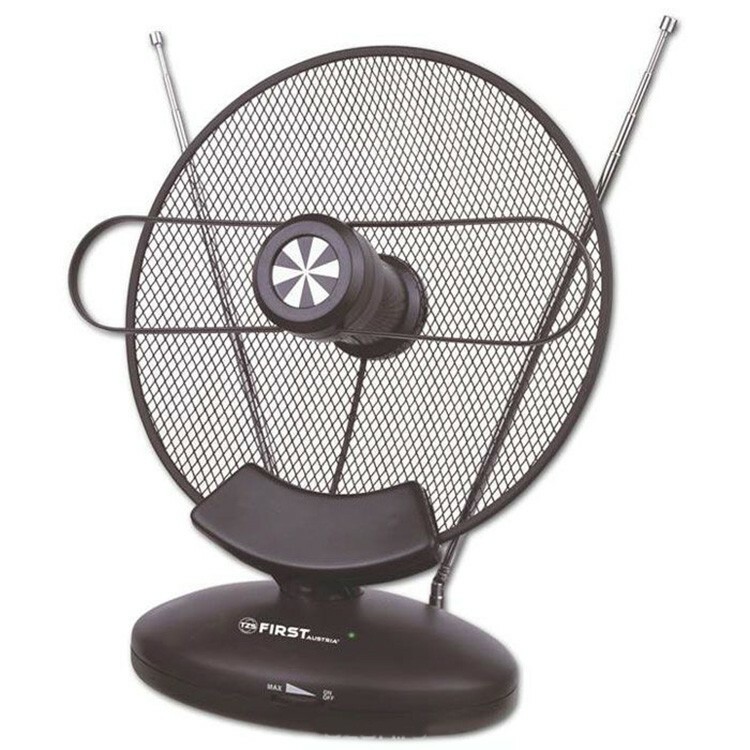
Active indoor antenna and its characteristics
When the question arises, which device to choose for receiving a digital signal, it is often necessary to analyze two designs. First of all, let's talk about what constitutes an active receiver for TV.

Active antenna has a built-in amplifier, however, it is not very suitable for conditions when the receiver has to be located next to the TV, since the trap itself is able to transmit the required signal to TV. Such a device will better cope with its tasks if it is installed at a considerable length from the TV. But here, too, there is a drawback: the signal quality can be lost when it passes through a cable to a digital decoder.
What is the difference between a passive receiver for television
Often, passive receivers are chosen to receive a digital signal. They do not have an amplifier, but they transmit the signal to the TV with high quality if placed at a close distance. The device is equipped with a small cable, and signal loss through its passage is minimized.
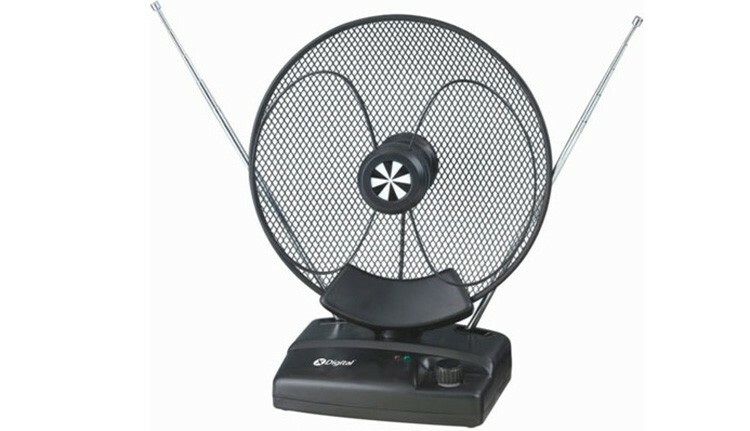
By installing an additional amplifier to the receiver, you maximally compensate for the loss of a signal of any wavelength.
What parameters to look for when choosing an indoor DVB T2 antenna
Having dealt with the types of possible indoor antennas, it is also important to know what parameters they should meet, depending on specific conditions. Of course, the appearance of the structure should not be excluded from attention: it is important that the device looks good in the interior among other electronics.

If your TV already has a built-in digital type receiver, the selection with the receiving device will be easier. Those who do not have such a design should take into account all the rules from this section.
- Be sure to measure the distance from the repeater to the intended location of the receiver. This parameter does not always turn out to be correct: during the adjustment process, the distance can vary significantly.
- Check the quality of digital reception (if any), find out the frequency of radio waves. Their standard length is from 10 to 100 cm.
- Pay attention to devices marked "UHF" on the packaging. These are suitable not only for receiving analog television signals, but also successfully convert a digital signal: there is no need to buy a separate antenna to receive DVB-T2.
- Make sure you have a connection cable. It is imperative that the kit contains parts for secure fastening of the antenna or a stable stand.
This is all you need to know when choosing a television receiver to display digital program signals. Of course, the appearance should not spoil the general idea of the situation in the house.
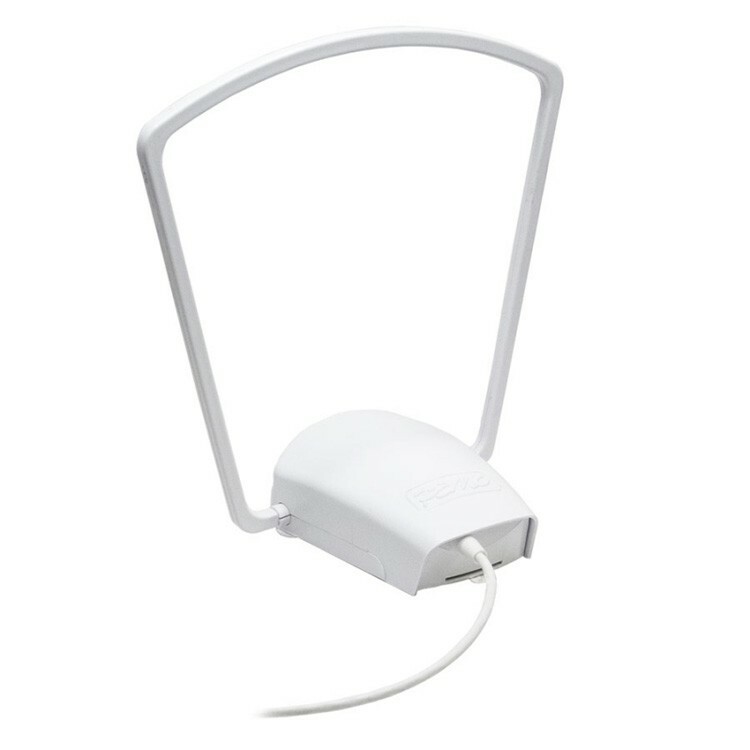
Popular models of indoor antennas for digital television DVB T2
It took a lot of time to form the rating, since the experts of the Tehno.guru editorial office had to analyze a lot of nuances responsible for the performance of the receivers. It is also worth noting right away that some parameters that perfectly manifest themselves in specific conditions may be inappropriate in other situations. If, for example, in a private residential area, devices ideally receive a signal, then in high-rise buildings the image will be transmitted with significant distortion. But let's take a closer look at indoor antennas, which gained their popularity in 2018 in many regions of the Russian Federation.
Indoor antenna TV Viva BAS-5304-DX
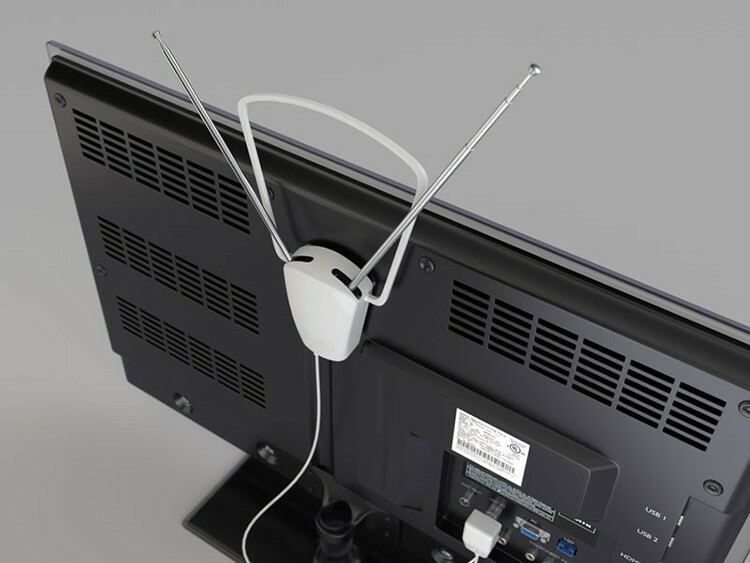
A compact indoor antenna is equally suitable for plasma TVs and conventional CRT TVs. The device is securely attached to the body of the repeater, and can also stand on the surface of a table or windowsill.
| Gain | Working voltage | Cable length, m | Wave resistance | Power Supply |
| 42 | 12 | 1,8 | 75 | Yes |
Viva BAS 5304 DX
REMO Digital - indoor antenna with great capabilities
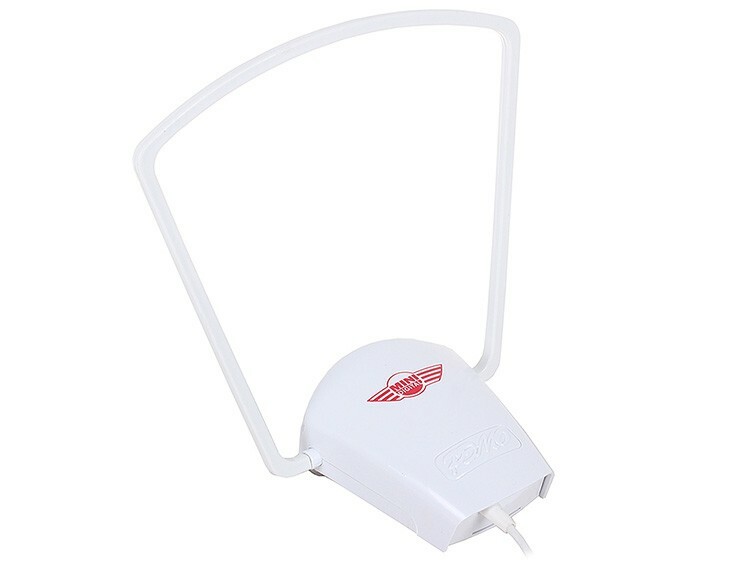
By installing such a device in your home and correctly connecting it to your TV, you get instant access to most of the entertainment channels. You haven’t seen such a crisp digital image yet.
| Antenna type | Maximum gain | Rated voltage, V | Weight, kg | Signal format |
| active | 31,5 | 220 | 0,2 | DVB-T2 |
Indoor antenna EMO Digital
ONE For All SV9015 - quality performance indoor antenna
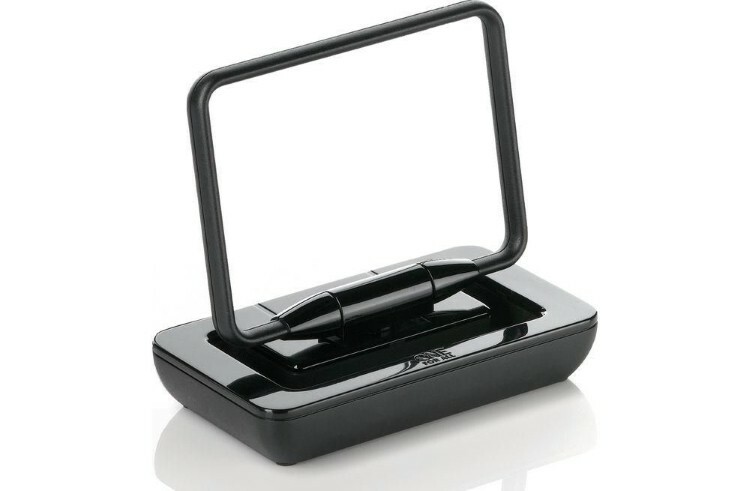
The device for receiving a digital signal perfectly performs its tasks directly in the room. Does not interfere with other receivers in contrast to VHF antennas.
| Antenna type | Rated voltage, V | Broadcast standard | Power Supply | Equipment |
| active | 220 | DVB-T2 | there is | Device and manual |
ONE For All SV9015
Internal antenna REMO Inter 2.0 with a designer case
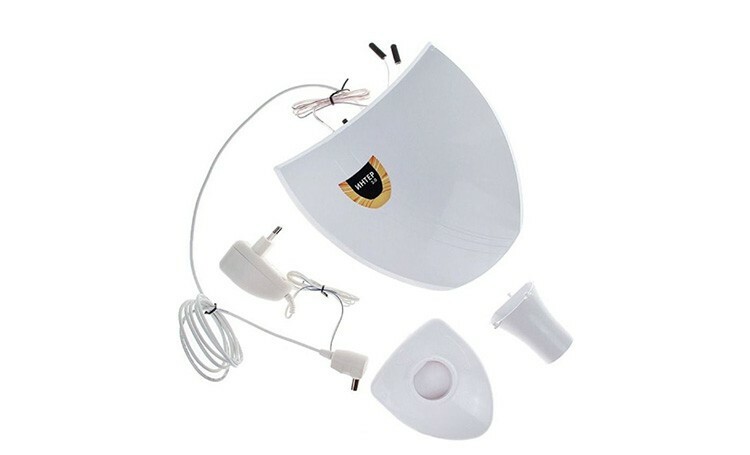
An easy-to-use, attractive and affordable indoor antenna. The trap body has a stable foot, so the device can be installed on any horizontal surface.
| Successor type | Gain | Height, cm | Weight | Rated voltage |
| active | 42 | 8,2 | 0,6 | 220 |
Indoor antenna REMO Inter 2.0
Indoor antenna Ritmix RTA-010 for digital and analog TV
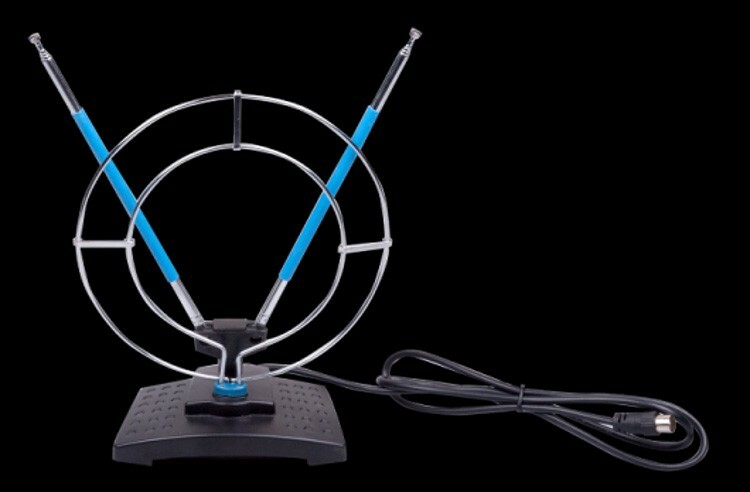
If you have this unit as a receiver, you no longer need to worry about buying a new antenna for receiving digital signals for television. This device transmits information equally well in two popular formats.
| Antenna type | Mustache length, m | Gain | Output Impedance | Signal transmission format |
| passive | 0,8 | 5 | 75 | UHF (470-862 MHz), VHF (87.5-230 MHz), FM |
Indoor antenna Ritmix RTA-010
Which indoor antenna is better to buy for your home: editor's choice Tehno.guru
Having analyzed all the advantages and performance characteristics of the listed room receivers for TVs, the editors of Tehno.guru chose the device as the leader "REMO Digital": one of the most reliable and high-quality receivers, the operation of which is possible not only in conditions of maximum proximity to the TV tower, but also at a considerable distance from her.
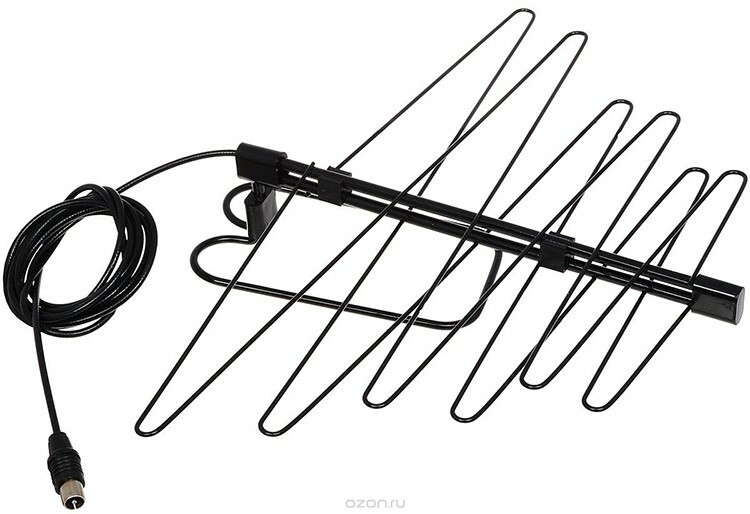
The equipment works according to a simple principle and facilitates the search for new channels in digital format. You can find out about the technical parameters of the declared model from the previous section.
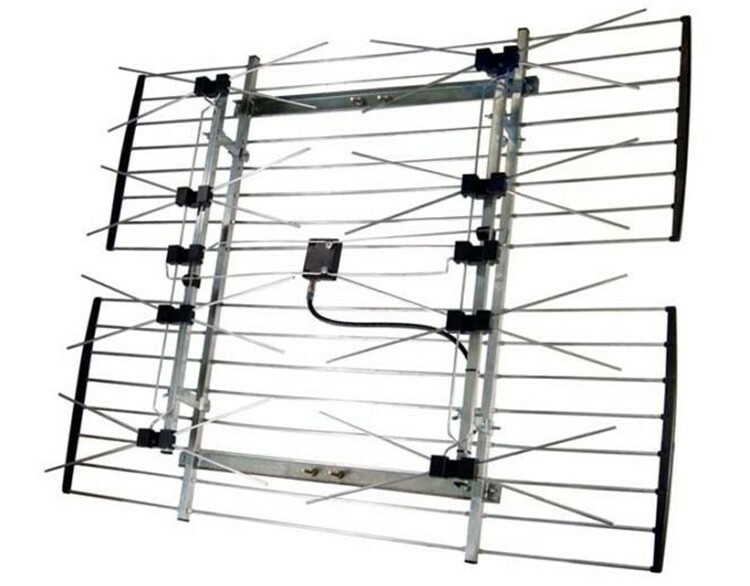
How to set up an indoor TV antenna yourself
Surely it is clear that outdoor antennas are many times faster and better able to pick up signals of not only analogue programs, but also digital: in an open space, radio waves propagate unhindered, and in four walls they can penetrate the TV more difficult. But even indoor receivers, if properly tuned, are capable of receiving a quality signal.
- Place your receiver on top of your TV or on a window sill next to it. Plug the plug into the appropriate jack, then search and tune the channels. If there are few programs, try moving the antenna sideways, up and down.
- If your antenna has a "mustache", then you can achieve image quality by changing their height, as well as adjusting the angle between them. Once the best signal is received, be sure to fix the device in this position.
- You probably noticed that in your presence the antenna picks up the signal better, and as soon as you release the device, snow and hiss are formed. This is due to the fact that waves are reflected from you, which are to be found in space.
- Some antennas need to be placed separately from the TV, especially if they are tuned to receive a digital signal and when your TV has a built-in T2 module. In such cases, it is important to achieve better capture, after which programs should be monitored.
- If there is a built-in amplifier on the indoor antenna, then there must be a regulator as well. Twist it to find a position where the TV signal improves, then leave it that way.
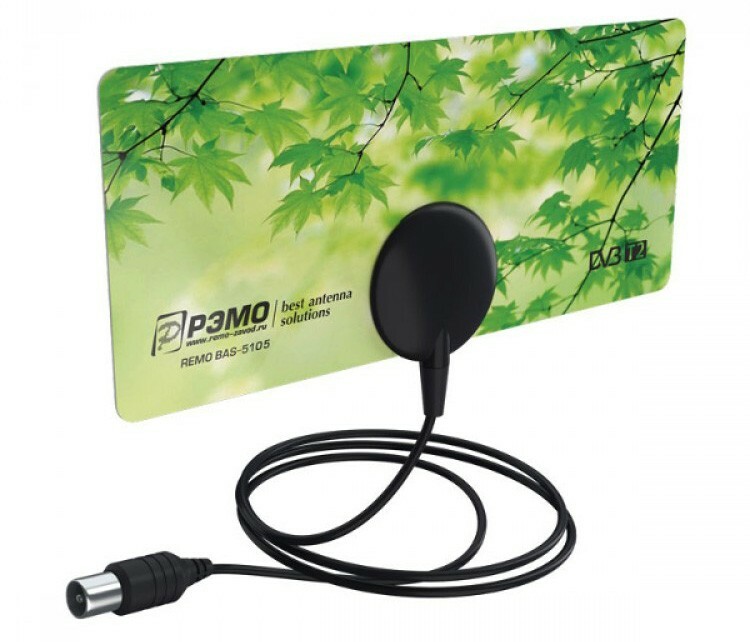
GOOD TO KNOW!
If your antenna has found a lot of channels in a foreign language, you may not try to tune in to them the perfect signal. For this, it is important to know the specific parameters of the radio wave, it is also desirable to know the language of foreign broadcasting.
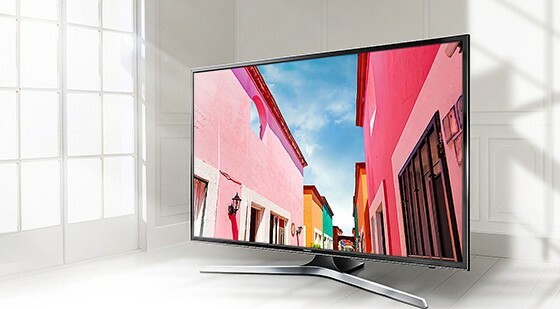
Poor quality of the received signal and general features of using an indoor antenna in the country
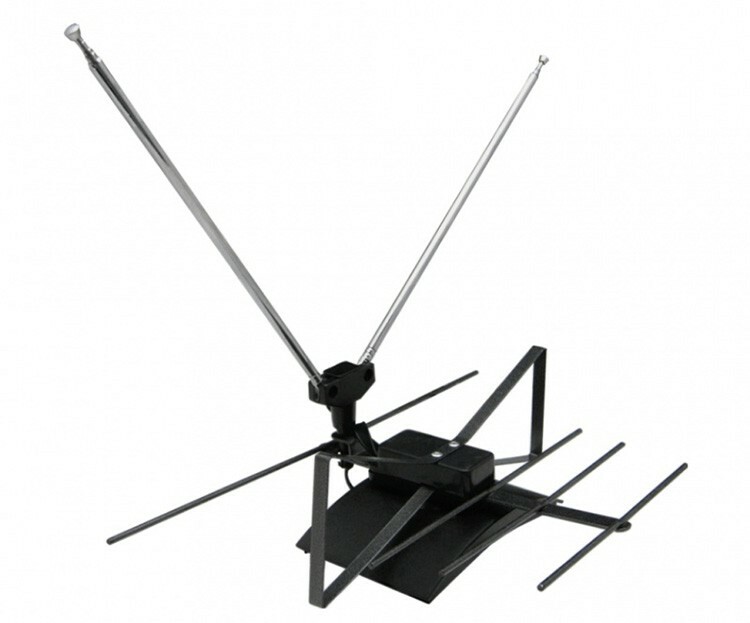
Temporarily living in a suburban area, one way or another you have to turn on the TV in order to keep abreast of city events. But in some areas, the digital image quality is poor, and it makes no sense to install an outdoor antenna. Let's discuss how to enhance the reception of radio waves with a standard indoor antenna.
- Try changing the position of your antenna or simply turning it in the opposite direction. Sometimes the signal on the TV comes to you from another tower, and not from the local one.
- Search for channels on the TV manually after the above manipulations.
- Connect a dedicated amplifier to the TV receiver cable (you can buy them on the radio market).
- Remove possible interfering objects: even a simple metal figurine can cause poor reception.
- Check the integrity of the cable - very often it bends exactly at the point of connection with the plug.
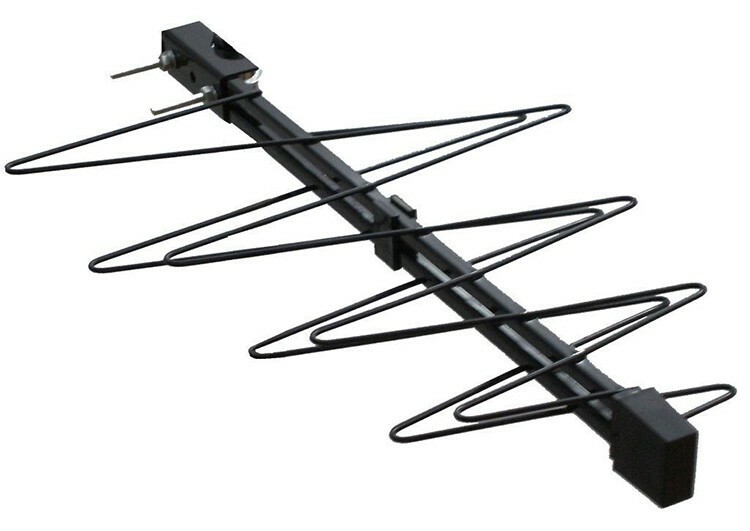
If your antenna is functional, then the listed methods can solve the problem of poor image quality. Otherwise, try changing the room receiver - the internal structure could be damaged.
Remember that the indoor antenna should only be used for its intended purpose. If it's a TV receiver, then don't try to connect it to a radio or other device.
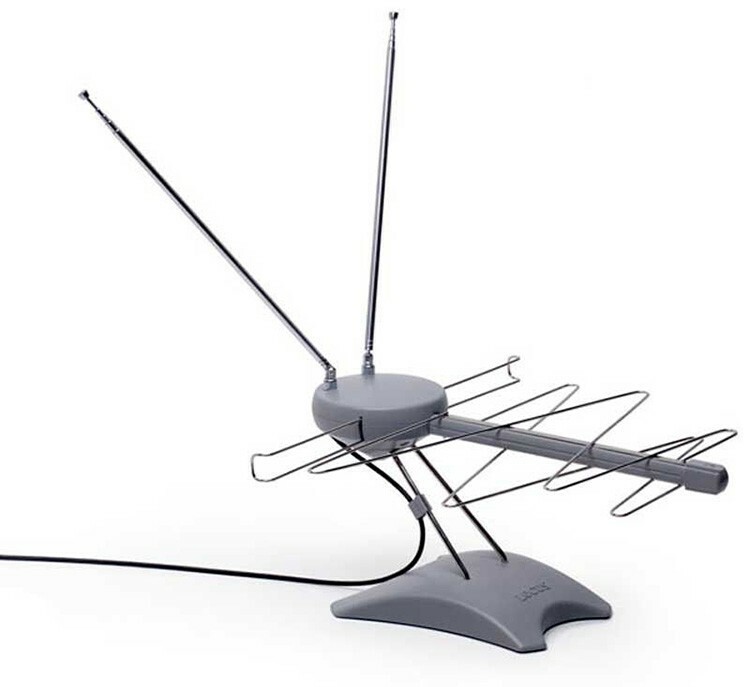
Avoid exposing the device to water or dust. Very soon, this can affect the performance of the antenna.
You should not unknowingly use any amplifier for an indoor antenna: there are models with built-in equipment, but there are those that simply do not support such a system. You can familiarize yourself with this feature in detail in the manual for your repeater.

Do-it-yourself indoor antenna for digital TV
Why don't you try to implement a powerful and rather sensitive to digital broadcasting device yourself? A properly made design is the key to a high-quality image.
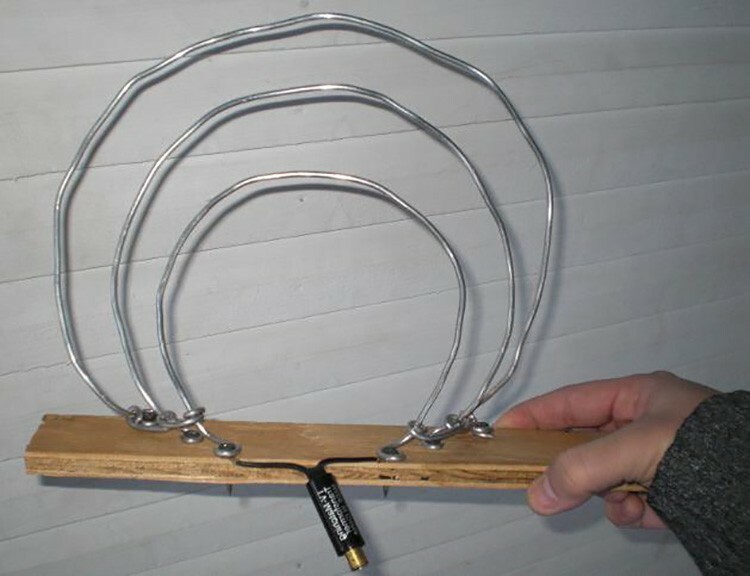
What tools and material are needed to make a do-it-yourself indoor antenna
First, let's figure out what kind of inventory and material we need to acquire first. If you lack some details, you can safely take improvised means from the farm. You will need:
- a piece of ordinary aluminum wire (preferably thicker);
- coaxial cable with a footage of no more than two meters;
- cable stripper, wire cutters;
- ruler and markers;
- screeds (for fastening).

Step-by-step video instructions for making a room antenna for a "digital"
As a guide for manufacturing, our editors have selected this video. The advantage of the antenna is that it can be installed not only in the room, but also on the balcony or in the window opening.
We figured out the peculiarities of the manufacture of indoor antennas, and we can consider the question of the scheme of their operation and design closed. Nevertheless, if you, dear readers, have any questions, be sure to ask them in the comments below the article.

